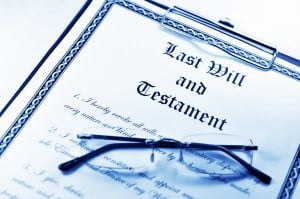(Photo by Ethan Miller/Getty Images)
Jerry Falwell, Jr. has been defamed! His former employers accused him of “lack of spiritual stewardship” which is surely defamatory per se, per quod, by gist, and in the eyes of God. It’s all part of a dastardly plot by The Lincoln Project to destroy President Trump!
“Vengeance is mine,” saith the Lord. And also Jerry Falwell, Jr., who is suing Liberty University for defamation and breach of contract in the Circuit Court for the City of Lynchburg.
The trouble started back in 2012 when the Jerry and Becki Falwell were on vacation at a fancy resort in Florida. They befriended a handsome, 20-year-old pool attendant named Giancarlo Granda, and then Mrs. Falwell befriended him some more. Whether Mr. Falwell was in the room watching when his wife and Mr. Granda were getting friendly is a matter of dispute. But Mr. Granda has produced a 2018 recording of himself engaging in friendly banter with Mrs. Falwell over Facetime while Mr. Falwell looked on, in addition to multiple text messages.
The Falwells claim they were extorted by Mr. Granda and that they remained cordial with him after he and Mrs. Falwell stopped being quite so friendly because they feared that he would harm them by disseminating pictures of Mrs. Falwell being, umm, super friendly.
But then Mr. Granda fell into the nefarious clutches of The Lincoln Project, an anti-Trump PAC of disaffected Republicans dedicated to defeating Donald Trump.
“On information and belief, [senior advisor, Kurt] Bardella and The Lincoln project have been advising Granda in an attempt to use his defamatory statements to harm President Trump’s chances at reelection,” intones the complaint.
And how do they know that publicizing Granda’s allegations is an attempt to affect the election? Well, “Granda has been observed paying for expenses with a credit card that was not his own. On information and belief, this card belongs to [Aaron] Resnick,” his attorney who introduced him to The Lincoln Project guys. (It’s an interesting position for people who themselves financially subsidized Mr. Granda for years in exchange for his friendly services.)
Plus the sub-heading on the Reuters article “The Falwell Affair” reads “[Granda] says he had sex with Becki Falwell while Jerry Falwell Jr, head of Liberty University and a staunch supporter of President Trump, looked on.” From which, the complaint insists, we must infer deliberate intent to harm President Trump at the behest of The Lincoln Project.
But what does this have to do with the university’s board of trustees?
See, after the story broke, the board believed Mr. Granda’s “lies,” so they told Mr. Falwell to tender his resignation. And the next day, the David Nasser, Senior Vice President for Spiritual Development, addressed Mr. Falwell’s resignation in an address to the student body, in which he said:
[W]e open the semester with a series of revelations about Jerry Falwell that can only be described as shameful. That’s OK, by the way, to say it. It’s OK to call sin, sin. Paul says in Ephesians. [sic] Have nothing to do with the fruitless deeds of darkness but rather, expose them. It is shameful to even mention what a disobedient do in secret. But everything exposed by the light becomes visible.
Which is just the same as repeating Mr. Granda’s defamatory allegations, and also violates the non-disparagement clause of Mr. Falwell’s employment contract. An article published by the University accusing Mr. Falwell of a “lack of spiritual stewardship” and of having “broken trust for most in Liberty University, and [causing] some question Liberty’s commitment to its nearly 50-year mission of Training Champions for Christ” is similarly slanderous, according to this complaint.
And, oh, by the way, Mr. Falwell knows a thing or two about those hypocritical board members and the skeletons in their closets.
Upon information and belief, certain key individuals directly involved in the decisions and actions to force Mr. Falwell’s resignation and then defame him were fulfilling a long-held goal to end Mr. Falwell’s fruitful thirty-two-year relationship with the University. Reportedly acting in the University’s interest to dissociate the University from Mr. Falwell’s alleged indiscretions, these individuals had engaged, or were engaged, and various illegal, unlawful, and immoral or otherwise dubious acts in their stewardship of other institutions and otherwise which, if known to the public generally, would unquestionably tarnish the reputation of Liberty University by association. It is therefore hypocritical in the extreme for these key individuals to cast any action of Mr. Falwell as disqualifying Mr. Falwell from leading Liberty, as he has done successfully for many years.
UH HUH.
Well, good luck with that one!
Apropos of nothing, please enjoy this video which Mr. Falwell, about whom there has never been a whiff of scandal or impropriety, posted in August to his own social media account, before quickly deleting it.
And this photo of him drinking “black water” as befits the president of a university which has a strict prohibition on alcohol consumption.

Oh, you want a Soundcloud of him slurrily describing the event, too? Can do.
Discovery is gonna be LIT.
Jerry Falwell, Jr. v. Liberty University [via Courthouse News]
Elizabeth Dye lives in Baltimore where she writes about law and politics.








 Claire E. Parsons is a Member at
Claire E. Parsons is a Member at 


 Jill Switzer has been an active member of the State Bar of California for over 40 years. She remembers practicing law in a kinder, gentler time. She’s had a diverse legal career, including stints as a deputy district attorney, a solo practice, and several senior in-house gigs. She now mediates full-time, which gives her the opportunity to see dinosaurs, millennials, and those in-between interact — it’s not always civil. You can reach her by email at
Jill Switzer has been an active member of the State Bar of California for over 40 years. She remembers practicing law in a kinder, gentler time. She’s had a diverse legal career, including stints as a deputy district attorney, a solo practice, and several senior in-house gigs. She now mediates full-time, which gives her the opportunity to see dinosaurs, millennials, and those in-between interact — it’s not always civil. You can reach her by email at 



